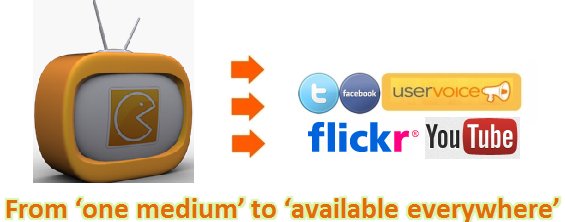Anois! TV is a television news channel for Irish teenagers aged 13 to 19 (‘anois’ is the Irish for ‘now’). The channel’s output will be original, compelling and specifically tailored to appeal to a young audience. A mixture of national and international news stories will be covered, along with stories of interest to teenagers, including sport, entertainment and education stories. Bulletins will be accurate, informative, energetic and visually stimulating, to catch and hold the attention of teens. Current affairs programmes will also be produced containing Irish-focused news analysis, telling human stories and featuring engaging characters that our young audience can relate to.
Traditional media – television, radio and newspapers – is increasingly losing ground with teenagers today, and having an online presence is an absolute must for any news organisation attempting to reach a young audience.

Research shows that in order to appeal to teenagers, news must be interesting and presented in an engaging format. Anois! TV will have a website featuring short and concise daily news articles, as teenagers do not enjoy reading long chunks of text online. ‘Fact boxes’ will accompany articles, containing essential information and relevant links to provide our young audience with context to international or complex stories. Online videos will compliment other content, rather than duplicating information needlessly. We will share information creatively – using maps (to pinpoint foreign locations), graphs, podcasts (for exclusive interviews), picture galleries, animations, timelines (for stories with key dates and events) and blog commentary (to keep users up to date with breaking or on-going stories). All of this content will be accessible on smartphones and iPads.

Participation, engagement and interactivity all make news more appealing to young audiences. The Anois! TV website will aim to make news a springboard for discussion, action and change among Irish teenagers. They will have the opportunity to get involved with current affairs through online discussions and debates. The website will contain community elements including polls, forums, comments and questions. When significant news stories unfold, experts and sources close to the story will be invited to take part in live online Q&A sessions – something audience members can participate in. The use of user-generated content and interactive graphics (to help people visualise a story, e.g. an earthquake abroad) will also allow us to engage directly with our teenage audience.

Social media plays a crucial role in allowing news organisations to reach consumers, and it acts as both an outlet for journalism and a news gathering tool. Teenagers are hugely passionate about technology today, and new research shows that a huge 77% of audience members participate online. A study conducted with Irish teenagers aged between 13 and 19 found 97% use Facebook and 60% use Twitter. It also revealed that 44% stream television shows online through RTÉ Player.
Anois! TV will treat Twitter and Facebook as publishing platforms in their own right, in order to target teenagers where they are most active. Readers will be alerted to breaking news stories as soon as possible via email, text, Twitter and Facebook. Presence on Twitter will be two tier: as well as the main ‘@Anois!TV’ account offering followers the latest news stories, features and analysis, we will have a second twitter account specifically for breaking news alerts and updates, ‘@ATVBreaking’. Both accounts will be managed using Tweetdeck and used to showcase high value content from the news channel and website. Twitter will also be used by our reporters to find unique follow-up angles, expert insight and add colour to our content. Hashtags will be displayed during bulletins, reporters will carry out live-tweeting from important events, and including links to online content in tweets will drive traffic to the website.
In order for Anois! TV to carry out convergent multi-media publishing successfully, all team members need to be flexible, adaptable, multi skilled and familiar with blogging, podcasting, filming and interactive design. They will have the ability quickly decide on the most appropriate medium through which to tell a story. By working together and using the strengths of all mediums available to them (broadcast and online), the team will be able to ensure content reaches our target audience effectively, on a wide range of platforms.
The news team will consist of an editor-in-chief – someone with strong editorial leadership and clear news values, who will be responsible for setting the news agenda each day. A news editor and sub-editor will research stories, develop ideas and be responsible for the overall quality of each bulletin. A television producer will oversee the production of news bulletins and current affairs programmes. An online editor will be required to commission news articles, interviews, features and reviews for the website that will appeal to and excite the channels target audience. An online sub-editor will edit copy for the website and ensure the homepage is visually appealing and up-to-date. Three reporters will be needed: one for international news, one for national news and one for sport, entertainment and youth issues. Each reporter will be multi skilled and have the ability to produce text, audio and video packages suitable for television and online publishing. They will also present on the television channel and have the ability to communicate information in a more informal style, suitable for a younger audience. Content will also be commissioned from freelancers. An interactive social media editor will be responsible for developing and expanding the channel’s social media presence across multiple platforms, including Twitter, Facebook and on smartphones. The channel will also offer internships to media students. Having a young person on board will help ensure our content is as relevant and compelling as possible for teenagers.








